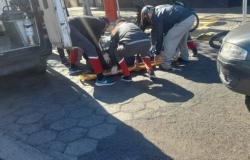During the first quarter of 2024, the activity level report from the National Institute of Statistics and Censuses (INDEC) recorded a drop in the Gross Domestic Product (GDP) of 2.6% compared to the fourth quarter of the previous year and an interannual drop in 5.1%. The largest decrease was observed in gross fixed capital formation with a decrease of 23.4% year-on-year.
There was only a quarterly increase in exports (11%). The added value of the agriculture, livestock, hunting and forestry sector had an interannual increase of 10.2%, in the case of fishing and the exploitation of mines and quarries it was 3.2% and 8% respectively. However, the decreases in construction (19.7%), manufacturing industry (13.7%) and financial intermediation (13%) were surprising.
“There may be a rebound, although it will not be something that is felt very strongly on the street,” Alejandro Giacoia, an economist at Econviews, predicted to La Nación about the future. “On average for the year, the economy will end up falling compared to 2023. Anyway, the next few months should be better in terms of activity. The key will be in the recovery of real wages and from that the improvement in consumption,” said the analyst.
According to the INDEC labor market report, in the first quarter of 2024 the activity rate (TA) reached 48.0%. This indicator measures the percentage of the working-age population that is economically active. Within the active population, in the universe of 14 years and older, disaggregated by sex, the BP for men was 69.4%, while for women it was 52.2%. The employment rate (ET) was 44.3% and an unemployment rate of 7.7% was recorded. In the fourth quarter of 2023, the unemployment level (5.7%) had reached its lowest point in the current statistical series that began in 2004.
At a geographic level, the regions with the highest activity rates were Greater Buenos Aires and Pampeana (48.5% each) and Cuyo (47.8%), while the Northeast region presented the lowest activity rate with 45.7%. In terms of educational level, 60.3% of employed people have completed secondary school and 39.7% have higher or university education. Regarding the qualification of the main occupation, 55.1% corresponds to operational employment, 17.3% to technical, 17.1% to unskilled and 10.1% to professional.






